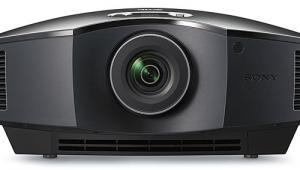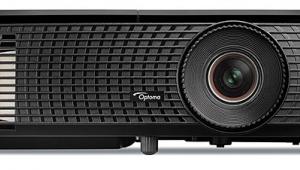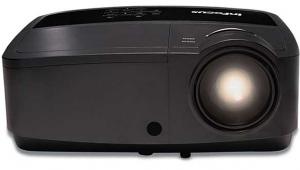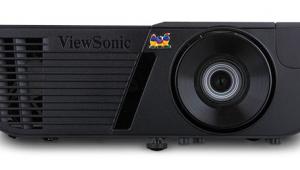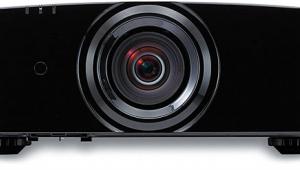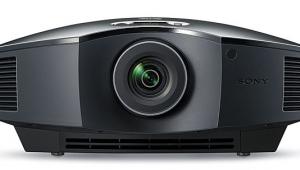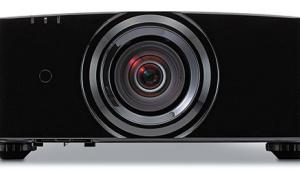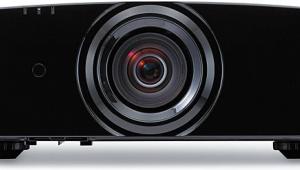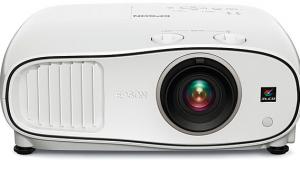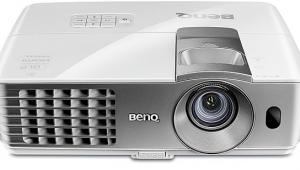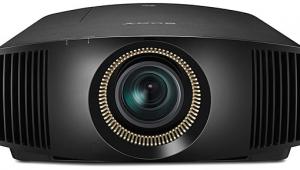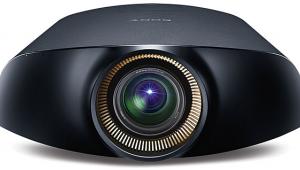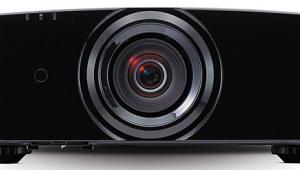Tom how would the brightness of this projector compare to my BenQ W7000? I am using an Elite electric drop down 125" diagnol screen with the acoustically transparent 1080P-2 material that is 1.0 gain. My theater is a dedicated space and complete black hole. With my current set-up brightness is plenty sufficient, with the brightness comparable to Digital IMAX. That is, it's a bit brighter than most RealD 3 D I've viewed theaters. I'm wanting a bit deeper blacks than the W7000 but also comparable 3D brightness. I would guess 2D would be plenty bright but 3D would be lacking. My throw distance is 17ft.
Sony VPL-HW50ES 3D SXRD Projector HT Labs Measures
Full-On/Full-Off Contrast Ratio: 20,894:1
Except as noted, all of the measurements (and charts) here are for 2D operation and were taken on a 96-inch-wide Stewart Filmscreen StudioTek 130 screen (gain 1.3). The projector was in the low lamp mode, the Advanced Iris was on Auto Full, the Contrast Control was on 70, and there were approximately 160 hours on the lamp.
The above contrast ratio was taken with the projector positioned at approximately 14 feet from the screen using a Minolta T-10 light meter to measure directly off the lens. The peak-white level on the screen was 17.58 foot-lamberts measured with a Minolta LS-100 light meter. From these two measurements, we calculate that the black level on screen was 0.0008 ft-L. (The LS-100 will not measure below 0.001 ft-L, thus the reason for the two-meter interpolation.)
Using the same technique, with the Advanced Iris turned off and the manual iris set for an onscreen brightness of 17.55 ft-L, the black level increased to 0.0065 ft-L, and the full-on/full-off contrast ratio dropped to 2,710:1.

Color-tracking charts were generated in SpectraCal CalMAN, www.SpectraCal.com
The color tracking before calibration in the D65 Color Temperature setting was respectable, with a maximum Delta E of 5.0 at 100 percent brightness and an average of 3.16. After calibration, the maximum Delta E was 0.72 at 20 percent, with an average of 0.5. (Delta E is a measure of how closely a display comes to the desired D65 color temperature, with values under 3 to 4 considered essentially perfect to the eye.)

Apart from lows of 2.5 at 70 percent and 2.72 at 80 percent (likely due to the operation of the dynamic iris), the gamma never rose above 2.38, for an overall average of 2.33 at a gamma setting of 2.2.

The 3D calibration results (charts not shown) were surprisingly good. The average post-calibration Delta E was 1.76 (never higher than 0.83 up to 80 percent brightness but increasing to 2.78 at 90 percent and 8.0 at 100 percent). The gamma averaged 1.42 and dropped below 1.0 at 80 percent and above. As noted in the review, low gamma is often used in 3D to get adequate perceived brightness (a low gamma produces higher brightness in the mid-brightness region). The surprising thing is that such an odd gamma does not appear to compromise the picture.—TJN
- Log in or register to post comments


I had a question about your settings. I see you have 2 custom settings. A custom 1 and custom 3. Is the custom 3 intended for 3D viewing. Also my screen is 126" diagnaol Carada Brilliant white 1.4 16x9. When using your settings for a starting point should I disregard contrast , color and brightness calibrate with disc then use all other settings. I was going to zoom my screen down to see an aproxamation of what you calibrated. Will this work. I would also like to say your reviews provide good detail that readers really enjoy.

I recently returned an Epson 5020 because the screen movement seemed choppy and disturbed my vision. When I turned on FI, the movement improved but created a soap opera effect. I was referred to the Sony HW50es or the Mistubishi 7900 DLP (my current project is the Mit 3800). I was told that the picture on the Sony was outstanding and does not have the same problem I saw on the Epson 5020 and Im assuming the Pana 8000 shares as well. What are your thoughts on this? Let me know if my description of the problem is clear.
Thanks,
J

While I agree that 3D brightness is quite good with this projector, the flicker (I think ~48Hz) makes 3D much less enjoyable for me. I believe it results from the lamp pulsing. Ghosting is also an issue for high contrast scenes. Quite obvious in 'Gravity', for example.
Additionally, vertical resolution drops well below 1080p in 3D. Horizontal resolution, though, appears to remain at 2D levels.
All of this in aggregate means 3D is rather unenjoyable, for me, with this projector. 2D is fantastic though.
(My statements are all based off of test patterns using the Spears & Munsil HD Benchmark disc, 2nd version).
